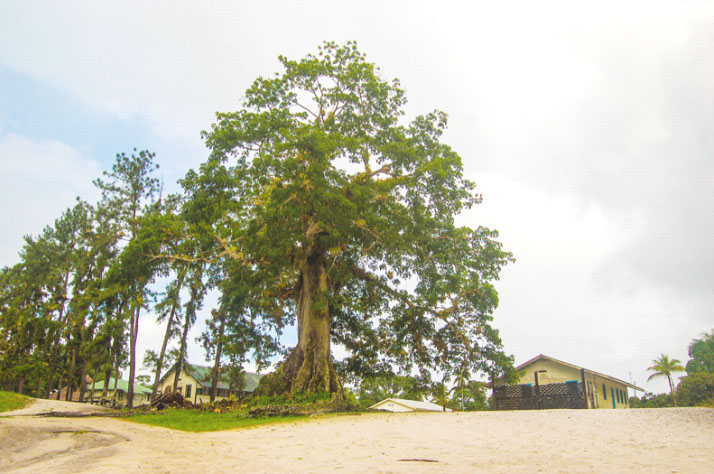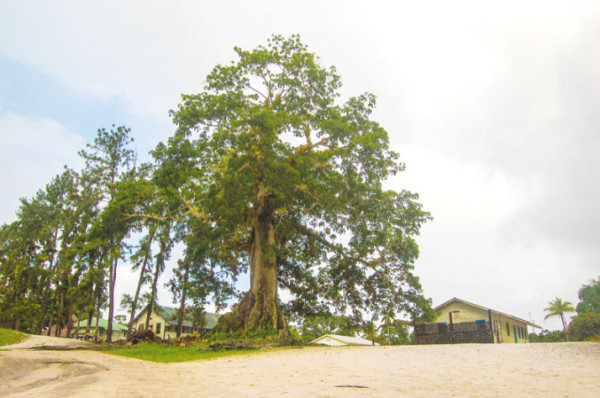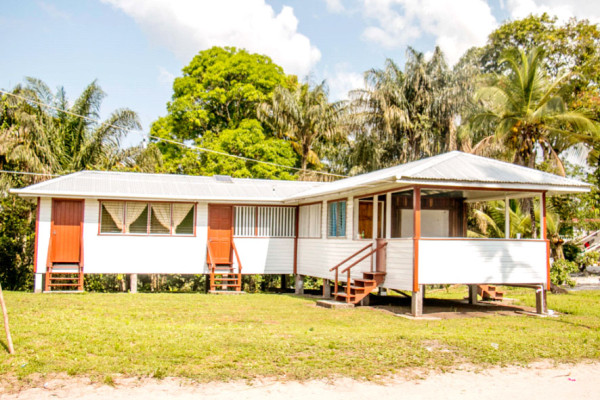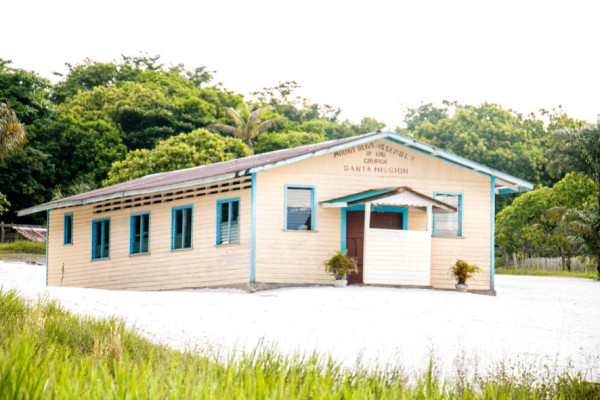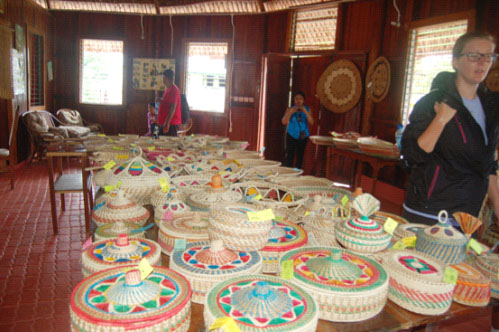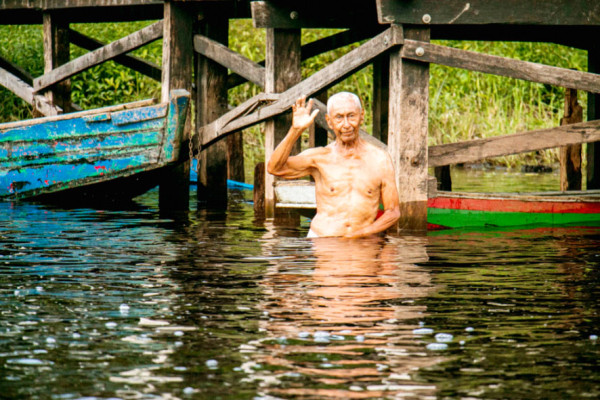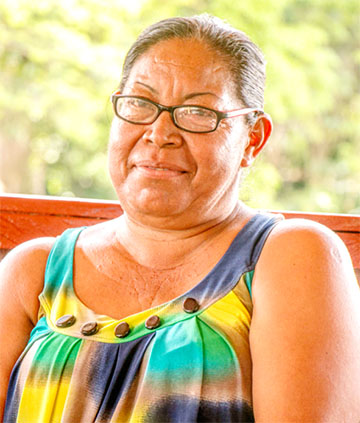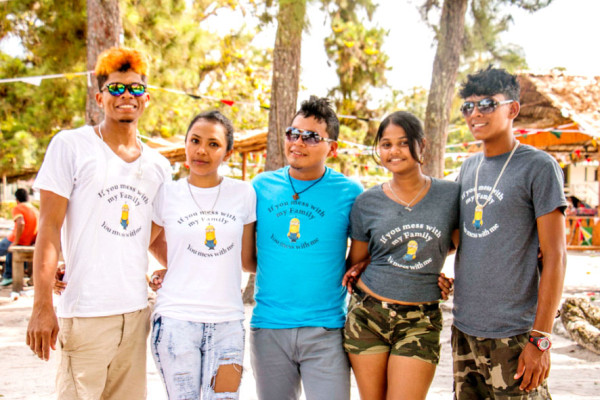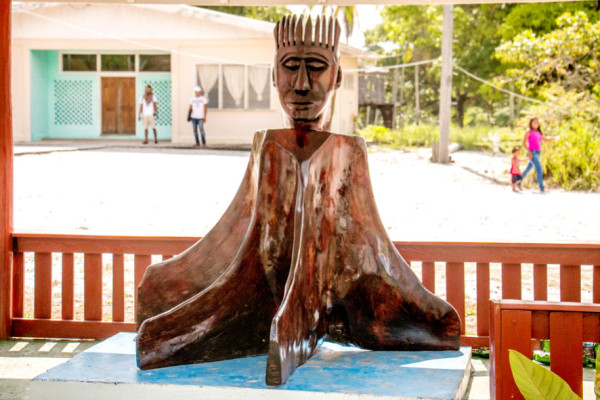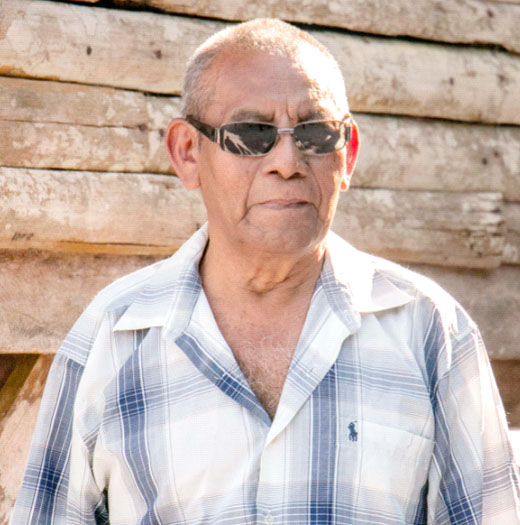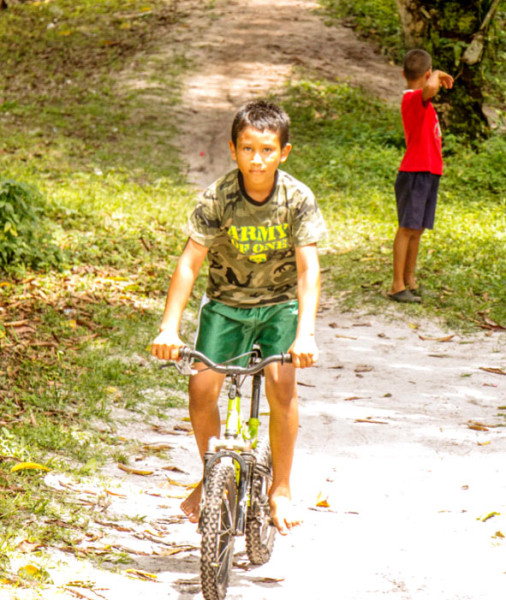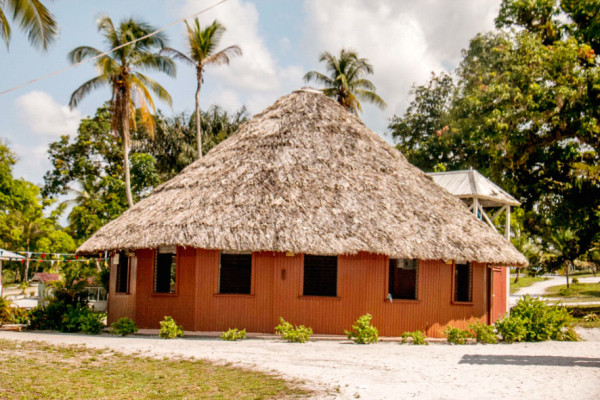Story and photos by Mariah Lall
and Arian Browne
Nestled on white, sandy hills and surrounded by contrasting flowing black water, the village of Santa Mission is the perfect example of how beautiful Guyana is.
The boat drive to the Mission along the narrow Kamuni Creek, a tributary of the Demerara River, is 45 minutes to an hour from Timehri, depending on the size of the boat and number of people travelling. And it provides travellers with the opportunity to be captivated by the rich flora lining the creek.
Popularly referred to as just Santa, the village is the only titled indigenous one in Region Three. It was established in the mid-eighteenth century and first settled by Alfred Patterson, a woodsman, who had stumbled on the location during his pursuit of the ever valuable Wallaba trees, which were used to fuel the energy sector back in those days.
Coincidentally, when The World Beyond Georgetown visited last Saturday, the community was celebrating 157 years since its establishment.
Home to approximately 200 people of mainly Arawak descent, Santa Mission’s main economic activities include small scale logging, handicraft and tourism.
The village is a stopover for tourists heading to Arrow Point Nature Resort and the former Timberhead, both of which are in proximity. Santac Tours has since been established in the community and offers day and overnight packages, guides and cultural interpretation among other services.
Near the point where the boat journey ends is a giant silk-cotton tree, with roots that reportedly extend throughout the village. Villagers call the tree Kamaka, which comes from the Arawak language and means ‘the mother of all trees’. Used as a landmark during the Dutch occupation of the Demerara River, the tree now provides a scenic background for locals and visitors wanting to take photos.
For Donna Jaqueline Patterson, life in Santa Mission is simple and enjoyable but not without its challenges.
Resident at Santa Mission for over 27 years, she has been a teacher at the local primary school for 26 of those years. She said her father was actually from the Mission but had met her mother, who was from Waramuri in Region One, in Georgetown, and they got married. She said her parents bore their children and raised them in the city prior to relocating to Santa Mission after her father took up an active position in the church.
“We were big children, but I guess we were still living together; it was myself, my sister and my brother. My other big brother was already [living on his own],” she explained. Donna and her sister remained in Santa Mission while her brother had since left.
Donna said while she believes education in the village is at an average level, teachers push for the furtherance of secondary education on the coast as the secondary department of the school only caters for the four core subjects at CXC, which she said, is not good enough for them. Additionally, there is a lack of teachers in village.
“…We only have 2 teachers who cater to a total of 41 students, from nursery to grade 8, right through. It is very strenuous,” she said, “I’m handling four classes as well as administrative duties.
“We have other teachers on staff but one is away at college, one at UG and a temporary teacher is currently on leave for the month to be a part of the Heritage Pageant.”
She explained that according to the Ministry of Education’s allocation policy, the village has the stipulated number of teachers needed at the school.
“I would get help from the nursery school teacher after her class is dismissed for the day, as well as from a resident Peace Corps volunteer, who also helps out when she can,” she said.
For Donna, unemployment is another serious issue plaguing the village and this is reflected in the attendance and performance of school children.
In her opinion, the village women are the backbone of the community. “We took it as a challenge having to host heritage village for this year and a lot of hard work went into the preparation. The women came out and cleaned, painted and made general preparations for the cultural presentation,” she said.
“Women can do a lot as long as they put their mind to it. Men don’t like come forward to do things,” she added, making reference to the village craft shop. The shop, which is run by the women of the village has been around for a number of years and continuously showcases the talent of the indigenous women.
Meanwhile, old timer John Patterson can’t stay away from his home for too long. Having spent a few days in city visiting his other children, he was happy to be back in Santa Mission, where he was born, grew up, met and married his wife of 48 years and raised 9 children.
A grandson of Alfred Patterson, John shared his experiences of tagging along with his father to help paddle a 6-tonne boat containing wood along the Demerara River to sell in Georgetown, to his days as Toshao and even courting his wife.
“I have been living here all my life, and when I was growing up, most of the men use to do farming, woodwork, fishing and hunting,” he said
He pointed out that houses with thatched roofs and Baramali skin floors which were once standard in the village have been replaced with houses made with modern building materials.
“Nobody is doing any farming anymore,” he lamented. “In my days as a youth growing, everybody up here had a farm and use to plant cassava, yam, pine and other things.”
He expressed his desire to see the revitalization of the almost if not entirely extinct use of the Arawak language in the community; something that was also highlighted by Donna.
Education and healthcare were also points he touched on, highlighting them as being key elements to the development of the village.
“The downside of living here is the poor healthcare,” John said. “We only have one health worker, my daughter, and she can only do so much. Education wise, some parents don’t see education as being essential to their child’s development.”
He went on to say, “My son was the first boy from here that went to university. It’s like he opened the doors for others and now he is a lab tech in Grenada.”
But for John, it’s the simplicity of village life that keeps him grounded.
Meanwhile, for 21-year-old Leticia Daniels, no matter where she takes up residence, Santa Mission will forever remain her home.
The young woman, who is currently residing out of the village owing to her job, was also too eager to relate her childhood memories of growing up in the village.
“I enjoy living here, it’s my home…. I feel free here. We may not all be family, but we live as though we are,” she said.
“For me I could live here forever, but the only problem is the lack of employment to sustain yourself. The main economic activity in the village is small scale logging and handicraft with tourism slowly blossoming. But other than that it’s okay for me, you have everything you need,” she said.
“I was once told that persons would come to Santa ask what makes the sand so white; people are usually surprised at how white the sand is,” she added.
Daniels, like Donna and John Patterson, also expressed the desire to see the development of the level of education offered to students in Santa Mission.
She noted that she was the last student from the community to be awarded a hinterland scholarship; that was 10 years ago.
Nevertheless, Daniels has fond memories of having bush cooks on Sundays with family and friends and spending hours in the tempting black water.
Now, she says, nobody really has time for those things as everybody is preoccupied with their cellphones and other technological devices.
